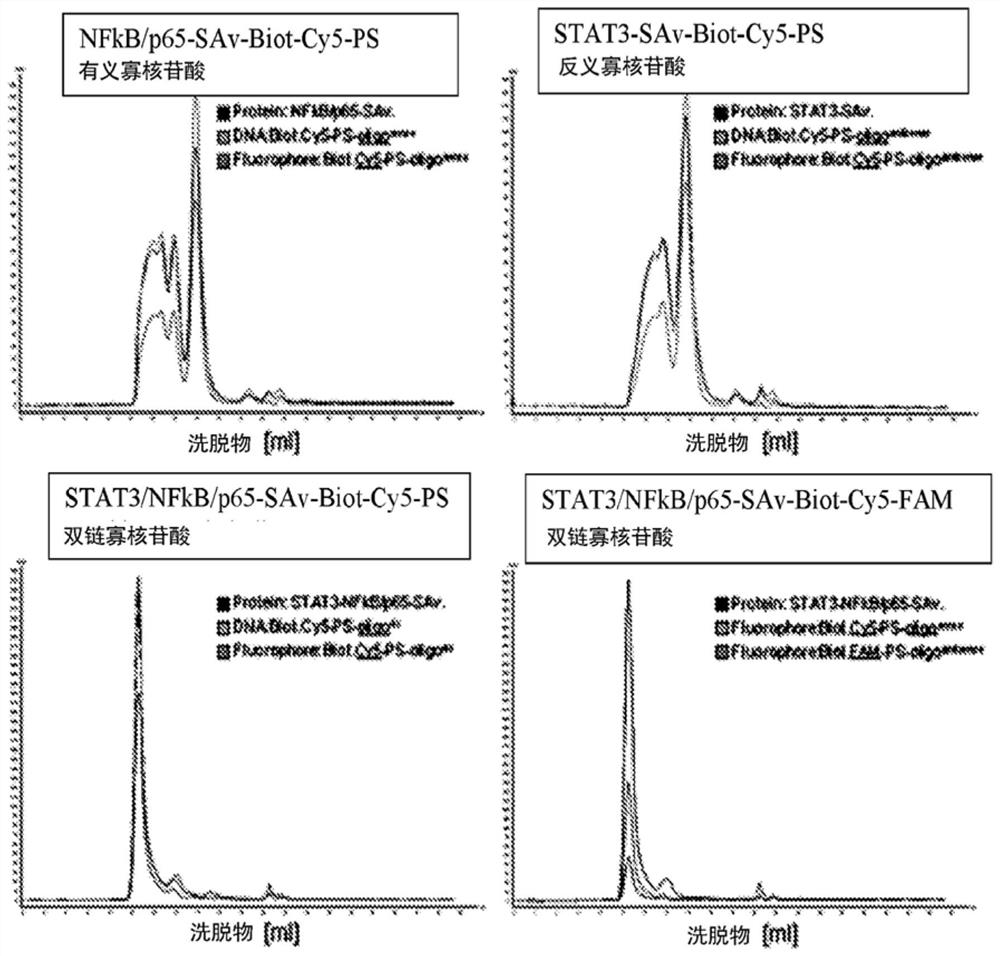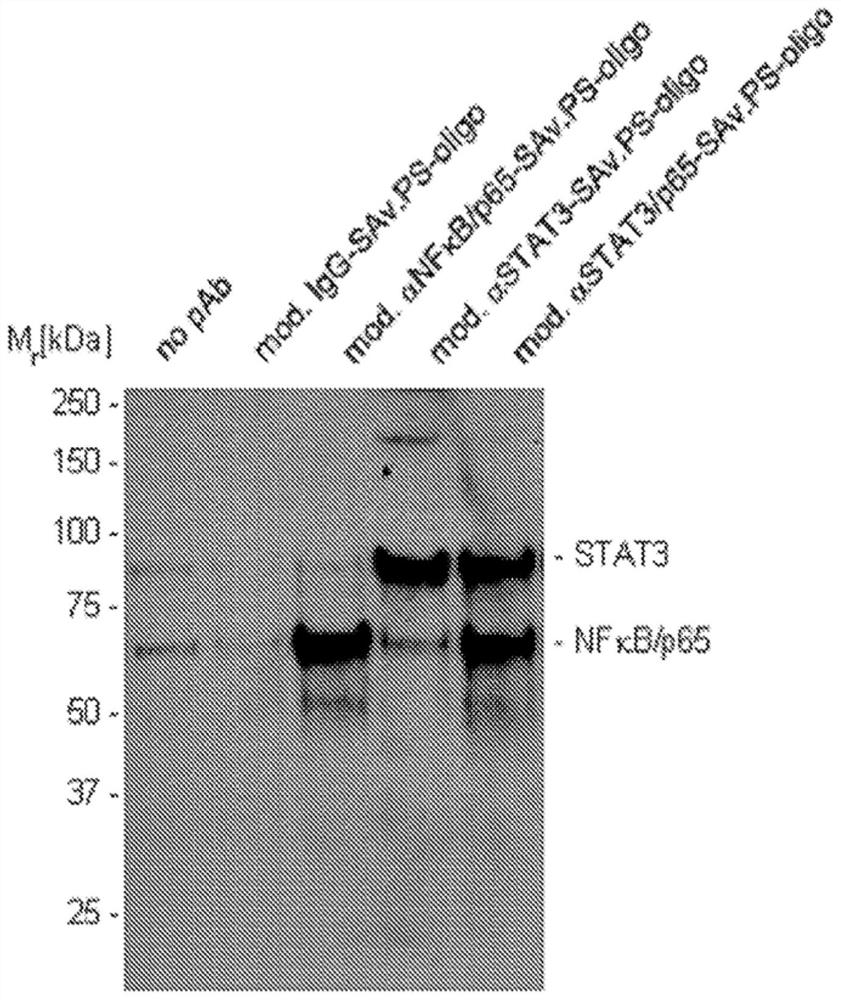Cell penetrating protein-antibody conjugates and methods of use thereof
A conjugate and cell technology, applied in biochemical equipment and methods, antibodies, anti-receptor/cell surface antigen/cell surface determinant immunoglobulin, etc., can solve the problem that antibody therapy can only target extracellular molecules, etc. question
- Summary
- Abstract
- Description
- Claims
- Application Information
AI Technical Summary
Problems solved by technology
Method used
Image
Examples
Embodiment 1
[0216] Example 1. Generation of bispecific antibodies by hybridization of attached DNA oligos
[0217] As described in more detail below, the present invention demonstrates that conjugation of double-stranded phosphorothioated DNA oligonucleotides to antibodies enables the antibodies to penetrate cells, recognize and bind intracellular antigens. Furthermore, Applicants demonstrate that this strategy enables the generation of cell-penetrating bispecific antibodies capable of recognizing and binding two intended intracellular target proteins. For example, Applicants show that sense and antisense linking of phosphorothioated DNA oligonucleotides to anti-STAT3 and anti-NFkB (p65) antibodies allows hybridization of selected nucleic acid sequences. After the hybridization procedure is complete, the bound antibody is purified by expected increased molecular weight compared to a single IgG-antibody ( figure 1 ).
[0218] Anti-STAT3-anti-STAT3 or anti-NFkB-anti- Formation of NFkB. ...
Embodiment 2
[0220] Example 2. Recognition of intracellular antigens STAT3 and NFkB(p65) by cell-penetrating bispecific antibodies
[0221] Human lymphoma Ly3 cells were incubated with single antibodies raised against STAT3 or NFkB (p65) modified with phosphorothioated single-stranded (ss) DNA oligomers to achieve recognition of intracellular targets ( figure 2 ). Since NFkB(p65) IgG is modified with phosphorothioated sense ssDNA-oligomers, and STAT3 IgG is modified with phosphorothioated antisense ssDNA-oligomers, Applicants conclude that the nucleic acid sequence is not critical for intracellular delivery. Crucially, the intracellular delivery is a prerequisite for the recognition of intracellular antigens.
[0222] However, incubation of human lymphoma Ly3 cells with bispecific anti-STAT3-anti-NFκB(p65) linked together by hybridizing phosphorothioated dsDNA oligonucleotides resulted in intracellular STAT3 protein and NFkB(p65) protein simultaneous identification.
[0223] All modifi...
Embodiment approach 1
[0226] Embodiment 1: A cell penetrating conjugate comprising a phosphorothioate nucleic acid linking a first non-cell penetrating protein to a second protein, wherein said phosphorothioate nucleic acid enhances said first non-cell penetrating protein and said first non-cell penetrating protein. Intracellular delivery of the second protein described above.
PUM
 Login to View More
Login to View More Abstract
Description
Claims
Application Information
 Login to View More
Login to View More - R&D
- Intellectual Property
- Life Sciences
- Materials
- Tech Scout
- Unparalleled Data Quality
- Higher Quality Content
- 60% Fewer Hallucinations
Browse by: Latest US Patents, China's latest patents, Technical Efficacy Thesaurus, Application Domain, Technology Topic, Popular Technical Reports.
© 2025 PatSnap. All rights reserved.Legal|Privacy policy|Modern Slavery Act Transparency Statement|Sitemap|About US| Contact US: help@patsnap.com



